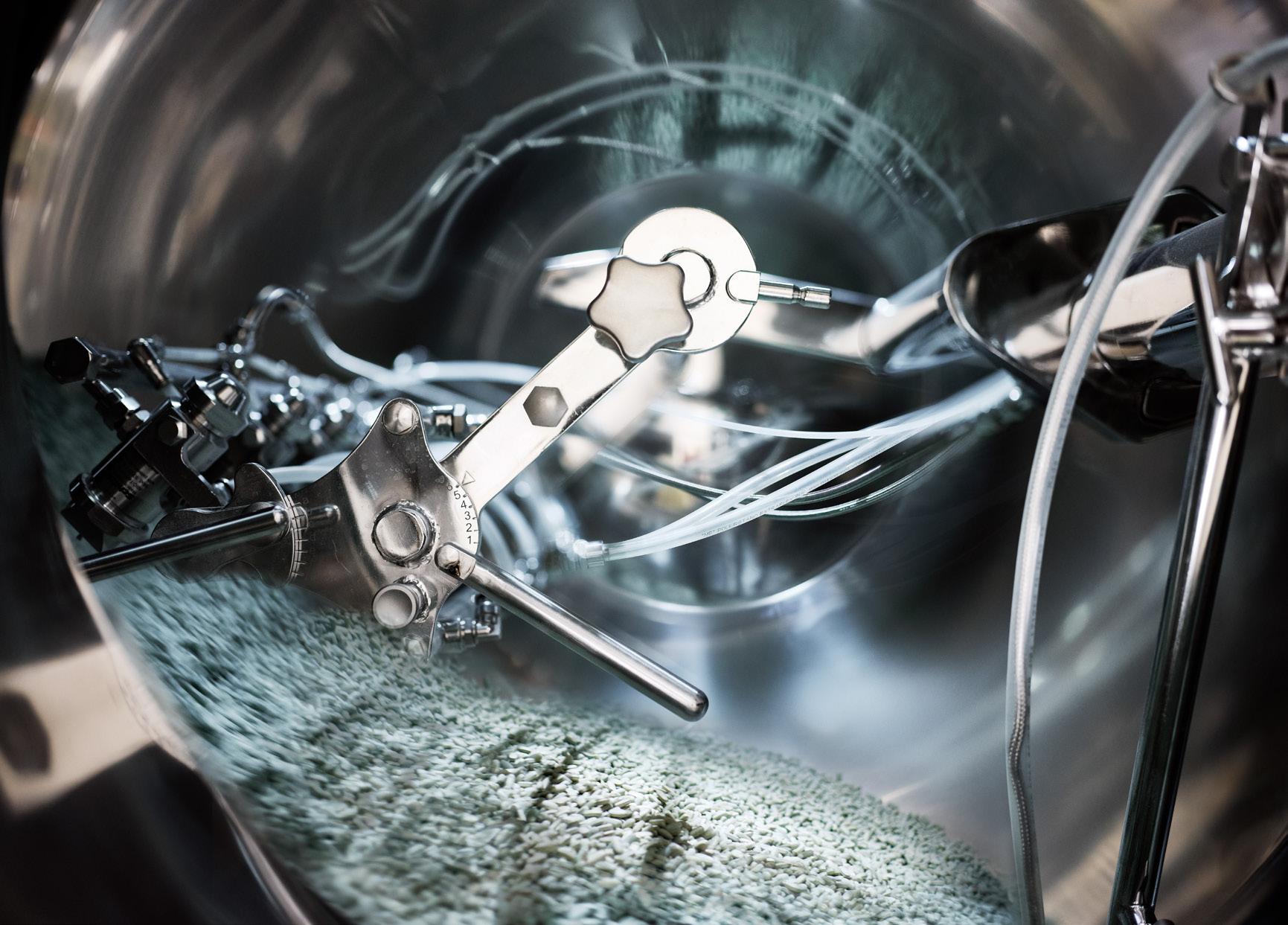Nutramedic &Cosmetics
medicinal plants photo herbarium
Passiflora
Flavonoids, alkaloids and coumarins have been found to be some of the constituents of Passiflora incarnata L. Various parts of this plant, known for its beautiful and unusual flowers, are available in a variety of forms, including teas, tinctures and food supplements.
P
assiflora (Passiflora incarnata L.) is a herba ceous vine, with bare, thin, poorly furrowed stems up to 9 meters long, with alternately arranged leaves. The leaves are deeply palmately di vided, and the leaflets are ovate-lanceolate, finely serrated at the top. On the long leaf stalks, there are two nectary glands. The flowers are single, 3-8 cm in diameter, the petals are pale purple, and from their base grows a series of filamentous pink to purple corona members, so the petals appear of two types. Passiflora is native to the eastern and southern parts of North America, and is planted as an orna mental plant all over the world. The entire aboveground part of the plant is used. Passiflora incarnata serves as a host plant for se veral butterfly species. Passionflower’s floral arrangement is so unique that early Christian missionaries decided to capita lize on its distinctive morphology, and use it as an educational tool in describing Christ’s crucifixion. The name describes the passion of Christ and his disciples1. The ripe fruits have a spongy partition, interesting in texture, which bears the ripe whitish yellow edible flesh surrounding the black hard seeds1.
Habitat & Cultivation
logical effects. A comprehensive review of the liter ature reveals Passiflora incarnata's anxiolytic prop erties. Experimental studies have demonstrated its ability to modulate gamma-aminobutyric acid (GABA) receptors, leading to anxiolytic effects. This is con sistent with traditional knowledge of the plant's ca pacity to induce relaxation and reduce anxiety. Sci entific studies have elucidated Passiflora incarna ta's role in improving sleep patterns. Its administra tion has been associated with an increase in total sleep time and a reduction in sleep latency. The ob served effects align with its historical application in managing insomnia. It has been shown to modulate neurotransmitters such as serotonin, which may underlie its calming effects. The plant's potential to relax muscular ten sion has been substantiated. Experimental research suggests its efficacy in reducing muscle spasms, which complements its traditional use in this regard. It's available in various forms, such as teas, tinc tures, and supplements, for these purposes.
References: 1
https://chestnutherbs.com/passionflower-ecology-cultiva tion-botany-and-medicinal-and-edible-uses/
2
Andrew Chevallier Mnihm: The encyclopedia of medicinal plants, Dorling Kindersley Limited, London, 1996. ISBN 0 7513 03143
Passiflora spp.
TAXONOMY
kingdom: Plantae order: Violales
family: Passifloraceae genus: Passiflora
species: Passiflora
incarnata L.
common name
purple passionflower, maypop, old field apricot flowering time
VI - IX month
Native to southern and central America, passion flower is now extensively cultivated in Europe.
Use for medicinal purposes
Passiflora incarnata L. has a history of traditional medicinal use. It is primarily known for its potential calming and sedative properties. It has sedative, an tispasmodic and tranquillizing properties.
Constituents
• flavonoids (vitexin, apigenin) • maltol • cyanogenic glycosides (gynocardin) • coumarin derivates • etheric oils
Action and application
Parts used are leaves, stem, and flowers, harvest when the leaves are green and vital (herba cum flore). Flavonoids, alkaloids, and coumarins are among the constituents identified in this plant. These com pounds are believed to contribute to its pharmaco
Passiflora spp.
53




























